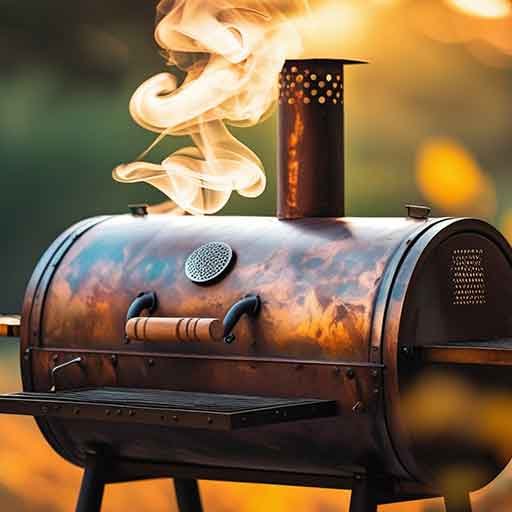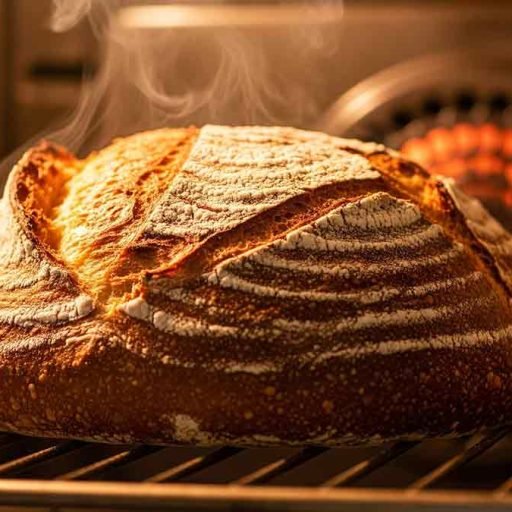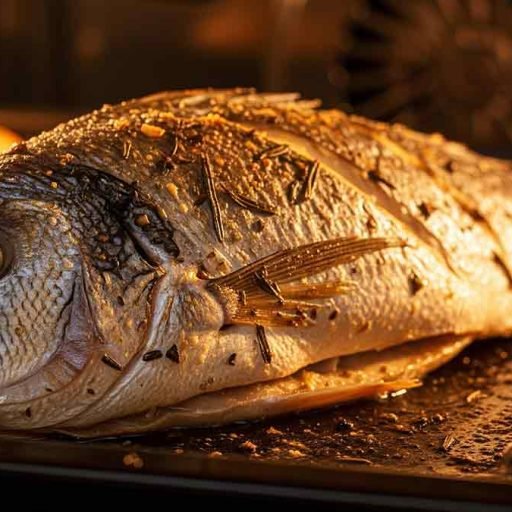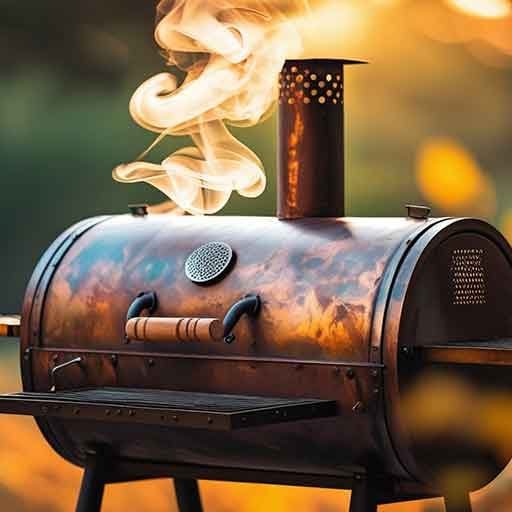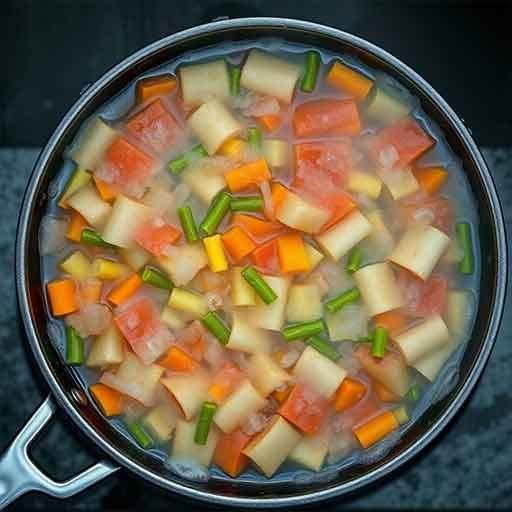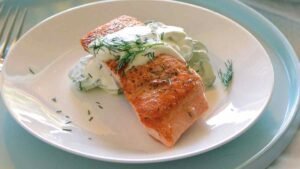Smoking is a dry heat cooking method used to flavor, color, and preserve food for immediate use. When smoking, heat is transferred to the surface of the food by convection and then into the food by conduction. Smoking involves burning wood or wood chips to produce smoke vapor, which contains compounds that help preserve and flavor the food. Smoky flavors can also be added by exposing uncooked items such as cheese and nuts to smoke without heat. Smoking preserves flavors and preserves food for longer storage.
(Note that the FDA’s 2022 Food Code requires that any establishment using smoking as a food preservation method must first obtain written permission from their local health department.)
Types of Smoking
There are two types of smoking: cold and hot.
Cold Smoking
Cold smoking dries and flavors foods at low temperatures. Cold-smoked foods typically require additional cooking before eating. Cold smoking is the process of exposing food items to smoke at temperatures between 40°F and 85°F (4°C and 29°C). Cold smoking at a minimum temperature of 40°F (4°C) promotes food safety because it is below the temperature danger zone.
Meat, poultry, game, fish, shellfish, cheese, nuts, and even vegetables can be successfully cold smoked. Cold-smoked foods are essentially still raw. Some, such as smoked salmon (lox), are eaten without further cooking. Most, such as bacon and ham, must be cooked before eating.
Hot Smoking
Hot smoking cooks foods in a closed oven at high temperatures for a longer period of time. Hot-smoked foods are fully cooked during the process and do not require additional cooking before eating. Hot smoking is the process of exposing food items to smoke at temperatures between 160°F and 185°F (71°C and 85°C).
Like cold smoking, hot smoking can be used to prepare a variety of foods, including meat, poultry, game, fish, and shellfish. Although most hot-smoked foods are fully cooked when removed from the smoker, some, such as bacon, are used in other recipes that call for further cooking.
Select the highest quality fresh, unblemished food for smoking. If frozen products are being smoked, thaw them thoroughly under refrigeration before smoking. All foods to be smoked should be salted or brined first in the refrigerator. Salt curing and brining add flavor, allow nitrates to penetrate the meat, and most importantly, draw moisture out of the food, allowing the smoke to penetrate more easily.
Before smoking, wash the food to remove any curing or brine water. Allow the food to dry until a sticky skin called a pellicle forms on its surface. The pellicle protects the food from drying out during smoking. The compounds in the smoke adhere to the surface or rind, adding flavor and color.
Smoking Temperatures
Smoke protects the surface of the food from bacteria or mold and gives the food a deep color. Properly smoked foods have a sweet, delicate smoky flavor from the charred wood. Accurate temperature controls ensure food safety when smoking food. For hot smoking, the temperature of the smoking chamber must be maintained within the appropriate range to ensure food safety.
The temperature at which the food is smoked can be gradually increased to ensure that the food is well-flavored and properly pasteurized. For example, meat can be smoked at a low temperature (125°F/51°C) for an initial period to set the proteins in the meat, then at a higher temperature (160°F/71°C) to cook the meat.
Temperatures above 185°F (85°C) are not recommended for hot smoking because the higher heat causes the food to shrink and dry out. (Barbecue, a dry-heat cooking method similar to hot smoking, is an exception to this general rule. It uses higher temperatures for both smoking and cooking.) During hot smoking, the food must reach a safe internal temperature.
For cold smoking, the temperature of the smoking chamber is maintained between 40°F (4°C) and 85°F (29°C). The food is held at this temperature long enough to absorb the desired smoky flavor. Remember that cold-smoked foods are cooked after smoking before being served.
Smoking Equipment
Smokers designed specifically for this purpose offer both cold and hot smoking. Smokers can be wood-burning, gas-fired, or electric. Smokers vary greatly in size and function, but they have several things in common: Smokers consist of a chamber that contains the food to be smoked, a source of wood to burn to create smoke, and a heating element.
While smoking large quantities of food requires specialized equipment, there are three affordable options for providing a smoky flavor in small-batch food preparation.
Stovetop Smoker
A stovetop smoker, which resembles a hotel pan with a tight-fitting lid, can be used to hot-smoke small pieces of meat, fish, poultry, or vegetables. Wood chips are scattered around the bottom of the pan. The food in the smoker sits on top of a mesh rack inside the box. The heat from the stovetop ignites the wood chips, enveloping the food in a flavorful smoke.
Electric Smoker
Another option is to use a small electric smoker placed inside a traditional oven. The box contains an electric heating coil surrounded by wood chips. The box lid has holes that can be adjusted to control the amount of smoke released into the oven chamber. The smoker can cook the food in a flavorful way at the same time as the heat from the traditional oven. Foods smoked over a stovetop or with a smoker box should reach the proper internal temperature to be served without additional cooking.
Liquid Smoke
A final option for adding a smoky flavor to foods is liquid smoke, a flavoring made from smoke, condensed by burning wood chips. When used correctly, liquid smoke can give a pleasant smoky flavor to barbecue sauces and marinades.
A variety of woods can be used for smoking food. Certain woods are chosen to impart specific flavors. alder is excellent for smoking salmon. Maple, chestnut, juniper, mesquite, and many other woods are also used. Avoid resinous woods such as cedar, which can impart a bitter flavor to food.
Procedure for Smoking Foods
- 1 Cut, trim, and prepare food for smoking. Trim excess surface fat from large cuts of meat. Carve poultry into uniform shapes. Trim bones and fins from fish.
- 2 Brine or cure the item before smoking. For brine, immerse the food in a saltwater brine flavored with herbs, spices, and other seasonings. For curing, coat the food with a dry mixture of salt and spices and refrigerate for the desired amount of time.
- 3 Rinse off any brine or cure.
- 4 Dry the item before smoking using clean disposable towels. Place the item on a stainless steel rack and refrigerate until a skin forms. Larger items can be hung from racks that allow them to air dry and develop a skin.
- 5 Heat the smoker to the desired temperature. For hot smoking, slowly bring the food to a temperature between 160°F and 185°F (71°C and 85°C). Wash the food until it reaches the desired internal temperature. For cold smoking, slowly bring the food to a temperature between 40°F and 85°F (4°C and 29°C). Doneness is determined by the internal temperature or time and the smoked flavor of the food.
- 6 Cool the food before storing in the refrigerator.
